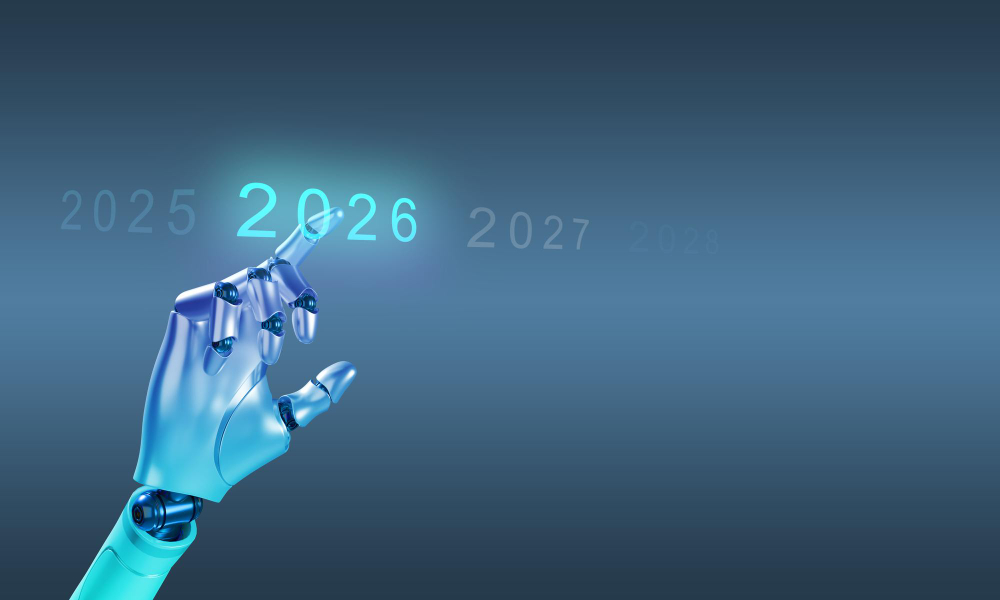- Blog
- September 3, 2025
Hyperautomation: From siloed bots to AI-powered enterprise ecosystems

- Blog
- September 3, 2025
Hyperautomation: From siloed bots to AI-powered enterprise ecosystems
In today’s fast-moving economy, efficiency is at table stakes—and innovation and resilience define the winners. Enterprises are under constant pressure to innovate, adapt, and deliver more value to customers with keeping resources under control. This is where AI-powered hyperautomation emerges as a game-changer. Far from being just another buzzword, hyperautomation represents a strategic shift — uniting AI, machine learning, RPA, and advanced analytics into a single intelligent, and self-optimizing processes.
Unlike traditional automation, which focuses on performing repetitive tasks faster, hyperautomation seeks to transform how work itself is executed. It’s about creating a digital nervous system where business processes, data, and decisions continuously evolve and improve. For leaders, this is not just a technological upgrade; it’s a pathway to resilience, scalability, and future-ready operations.
From bots to ecosystems: The evolution of automation
Organizations once relied on basic bots and scripts to eliminate manual effort. While these tools reduced costs, they were limited in scope — addressing narrow tasks and failing to connect processes end-to-end.
Hyperautomation changes the narrative. Instead of isolated automation, businesses can now build connected ecosystems where AI, RPA, and intelligent workflows interact seamlessly. This shift enables organizations to not only automate tasks but also orchestrate entire value chains.
For example, where a traditional bot might just enter invoice data, hyperautomation ensures that the invoice is validated, matched against purchase orders, approved by AI-driven policies, and instantly reconciled in financial systems — all without human intervention. This is no longer automation in silos; it’s automation at scale, driving business-wide transformation.
Key components of AI-powered hyperautomation
Hyperautomation draws strength from multiple technologies that work together as a single fabric. Its effectiveness lies not in one tool, but in how these tools complement each other:
- Artificial intelligence and machine learning: Beyond simple automation, AI and ML bring context and adaptability. Systems can read, learn, and evolve — whether by understanding natural language in customer requests or predicting demand fluctuations in supply chains. The ability to adapt means processes are not just automated, but also self-improving over time.
- Robotic Process Automation (RPA): RPA remains the backbone, but with AI infused, bots are no longer just rule-followers. They can now handle exceptions, make data-driven choices, and work in collaboration with humans rather than replacing them.
- Process mining and analytics: The power of hyperautomation lies in visibility. With process mining, businesses can identify hidden inefficiencies and target automation where it matters most. For example, companies often uncover bottlenecks that cost millions annually — insights that were invisible until data-driven process analysis made them clear.
- Integration platforms and orchestration: True transformation happens when systems “talk” to each other. Integration platforms ensure seamless collaboration between legacy systems, cloud applications, and new AI tools, building a fluid digital ecosystem that supports growth.
Each of these components is powerful on its own, but when combined, they create a self-sustaining loop of automation, insight, and improvement.
Benefits beyond efficiency
The promise of hyperautomation goes far deeper than operational efficiency. Its impact reshapes organizations in fundamental ways:
- Cost savings and resource optimization: By eliminating redundant tasks and streamlining workflows, hyper-automation frees both time and capital. But this isn’t just about reducing expenses — it’s about redirecting resources into innovation, customer experience, and strategic growth.
- Enhanced decision-making: With AI analyzing massive data sets in real-time, decisions shift from reactive to proactive and predictive. Whether forecasting demand, detecting risks, or tailoring customer journeys, leaders gain the clarity to act with confidence.
- Business agility and resilience: In volatile markets, agility is the ultimate advantage. Hyperautomation allows organizations to adapt at speed, whether it’s scaling up digital operations during demand surges or reconfiguring supply chains when disruptions hit.
- Employee empowerment: Far from replacing humans, hyperautomation augments them. By removing repetitive work, it enables employees to focus on innovation, problem-solving, and building meaningful customer relationships — creating a more engaged and future-ready workforce.
Challenges in adopting hyperautomation
Below are the key challenges that often slow down or complicate hyperautomation adoption.
- Integration with legacy systems: Many organizations still rely on outdated IT systems that were not built with automation in mind. Integrating hyper-automation tools with these legacy platforms can be difficult, requiring custom connectors, middleware, or even system upgrades. Without addressing these integration hurdles, automation initiatives may fail to achieve full scalability.
- Data quality and governance issues: The success of hyperautomation rests on the availability of accurate and well-structured data. Inconsistent, duplicate, or siloed data can undermine process automation, leading to inaccurate insights and poor decision-making. Organizations must strengthen their data governance frameworks to ensure data integrity before scaling automation.
- High implementation costs: While hyperautomation promises long-term savings, the upfront investments in advanced tools, infrastructure, and training can be significant. Smaller enterprises may struggle to justify these costs, especially if ROI is not immediately visible. A well-structured roadmap with phased adoption helps manage costs effectively.
- Workforce resistance to change: Employees may fear that automation will replace their jobs, creating resistance during implementation. Without proper communication and change management, this cultural resistance can derail projects. Successful adoption requires organizations to position hyper-automation as a tool for augmenting human capabilities, not eliminating them.
- Security and compliance concerns: As more processes become automated, the risks of cyber threats and compliance breaches increase. Automated workflows may inadvertently bypass security checks or mishandle sensitive data if not properly monitored. Robust cybersecurity frameworks and compliance controls are essential to safeguard operations.
Future Outlook: where hyperautomation is headed?
Hyper-automation is rapidly becoming the foundation of digital enterprises. With advancements in generative AI, cognitive automation, and autonomous decision-making, its potential will only expand.
Picture supply chains that self-heal, customer support that resolves issues proactively, or financial systems that audit themselves in real time. These are not distant visions but emerging realities — and businesses that prepare today will lead tomorrow.
Crucially, hyperautomation is not about replacing humans but amplifying their abilities. By combining machine precision with human creativity, enterprises can reshape how work is done, decisions are made, and value is delivered. For business leaders, the call is clear: embrace hyperautomation now or risk falling behind in a world driven by agility, intelligence, and speed. Partner with MSRcosmos today and take the first step toward building an intelligent enterprise that thrives on innovation, speed, and resilience.




